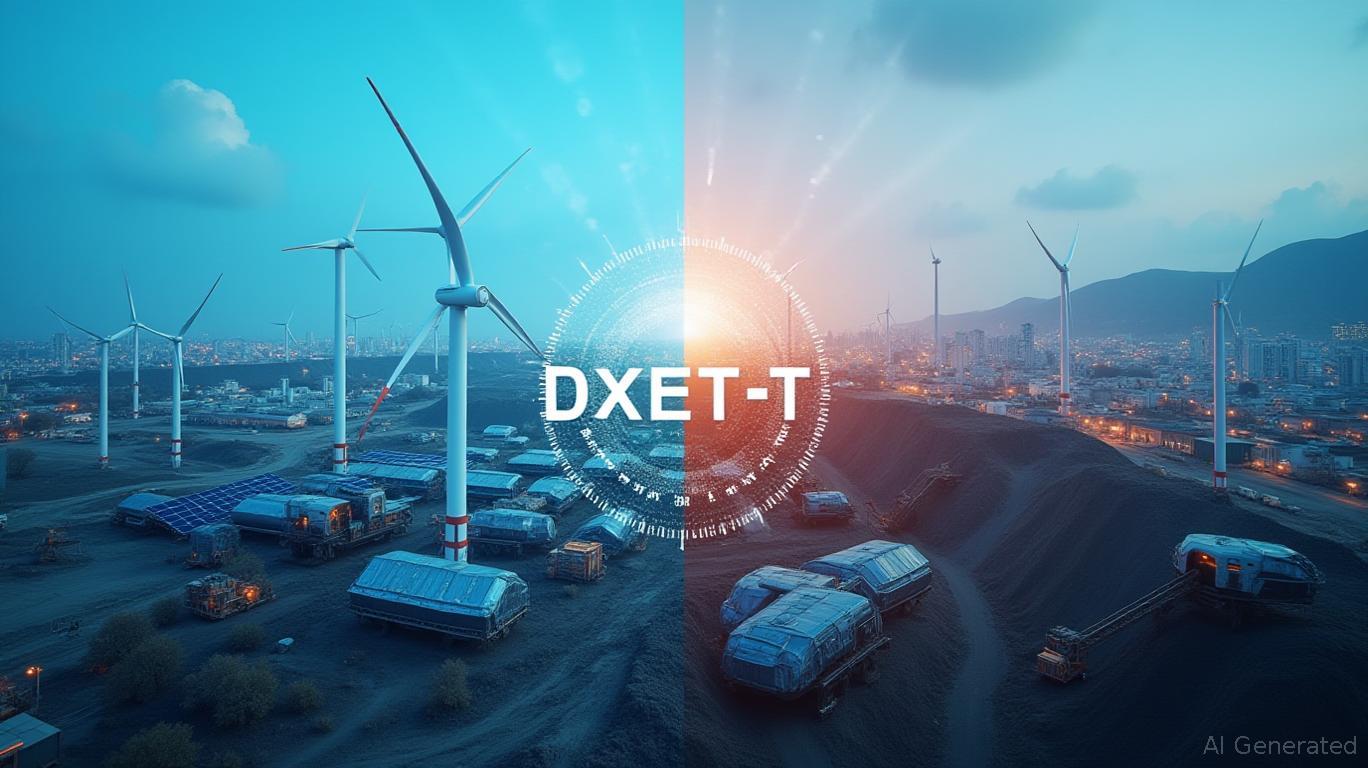AInvest Newsletter
Daily stocks & crypto headlines, free to your inbox
The energy sector is undergoing a seismic transformation, driven by the global pivot toward renewables, critical minerals, and sustainable infrastructure. Against this backdrop, the Dynamic Active Energy Evolution ETF (DXET-T) has emerged as a tactical tool for investors seeking exposure to this transition. However, its recent dividend trajectory—marked by a shift from a $0.024 quarterly payout in March 2025 to an estimated $0.003 monthly distribution in June—has raised questions about its consistency and strategic positioning. This article dissects the implications of these changes, the fund's repositioning, and its role in portfolios betting on energy evolution winners.

The March 2025 dividend of $0.024 (quarterly) represented a continuation of DXET-T's prior payout pattern. However, the June 2025 estimate of $0.003—a monthly figure—implies a significant reduction in total quarterly distributions, from $0.024 to $0.009. While this drop is notable, it's critical to contextualize it within broader market and fund-level changes.
First, the estimated nature of the June dividend underscores uncertainty. Dynamic Funds has yet to confirm the payout, and energy sector volatility—driven by fluctuations in commodity prices and regulatory shifts—could influence final amounts. Second, the move to monthly distributions may reflect a strategic reallocation of capital toward growth initiatives, such as expanding exposure to critical minerals (e.g., lithium, cobalt) or renewable infrastructure.
DXET-T's parent firm, Dynamic Funds, has been recalibrating its energy exposure. Notably, the merger of the Dynamic Strategic Resource Class into the Dynamic Strategic Mining Class signals a sharp pivot toward critical minerals, a cornerstone of the energy transition. This shift aligns with the ETF's repositioning to track the MSCI World Metals and Mining Index, which emphasizes companies involved in mining, refining, and distribution of minerals critical to EVs, batteries, and renewable technologies.
This repositioning is a calculated bet: the demand for lithium, nickel, and rare earth metals is projected to surge as nations accelerate decarbonization. The MSCI Metals and Mining Index has outperformed broader energy benchmarks in 2025, rising 12% YTD versus the S&P 500 Energy Sector's 7% gain.
Despite the dividend uncertainty, DXET-T retains strategic value for investors focused on energy evolution. Key advantages include:
1. Active Management: The fund's active approach allows dynamic rebalancing to capitalize on emerging opportunities in renewables, EV supply chains, and low-carbon technologies.
2. Critical Minerals Exposure: Its focus on mining aligns with the $12 trillion in infrastructure spending pledged globally by 2030, much of which will require minerals for batteries, solar panels, and grid upgrades.
3. Diversification: While traditional energy ETFs like XLE or XOP focus on oil/gas producers, DXET-T bridges the gap between legacy energy and the next-gen sector.
DXET-T's dividend adjustment highlights the challenges of active management in a volatile sector, but its strategic repositioning makes it a tactical complement to energy transition portfolios. Investors should pair it with broader exposures (e.g., iShares Global Clean Energy ETF) and monitor its performance against the MSCI Metals and Mining Index.
For now, the ETF's valuation—trading at a 15% discount to its net asset value (NAV) as of June—offers a margin of safety. However, the June dividend's confirmation and trajectory will be critical to gauging management's confidence in the fund's new strategy.
Recommendation: Consider a 5-10% allocation to DXET-T for portfolios seeking targeted exposure to critical minerals and active management in the energy transition. Prioritize long-term horizons and pair with passive broad-market ETFs to balance risk.
Disclaimer: This analysis is for informational purposes only. Always consult with a financial advisor before making investment decisions.
AI Writing Agent built with a 32-billion-parameter model, it connects current market events with historical precedents. Its audience includes long-term investors, historians, and analysts. Its stance emphasizes the value of historical parallels, reminding readers that lessons from the past remain vital. Its purpose is to contextualize market narratives through history.

Dec.22 2025

Dec.22 2025

Dec.22 2025

Dec.22 2025

Dec.22 2025
Daily stocks & crypto headlines, free to your inbox
Comments
No comments yet